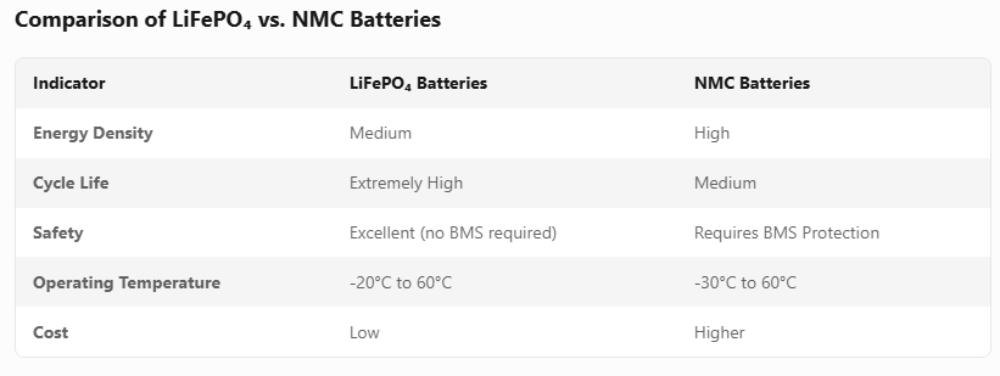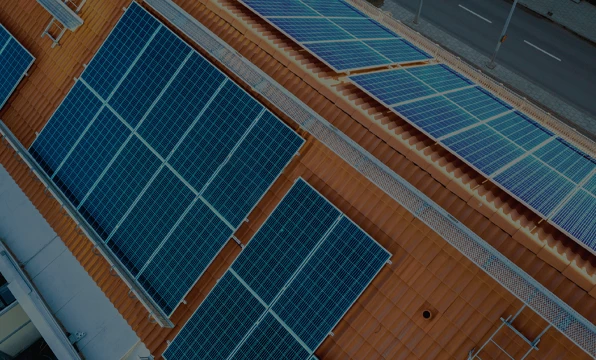With the rapid development of the new energy industry, lithium-ion batteries have become one of the core technologies in the fields of electric vehicles, energy storage systems and consumer electronics. Among the many types of lithium-ion batteries, lithium iron phosphate batteries have attracted much attention due to their unique advantages.
1.Key performance indicators for lithium-ion batteries
(1).Energy density
Energy density determines the amount of energy that can be stored per unit weight or volume of the battery, which directly affects the endurance of the device. The energy density of traditional Ternary lithium battery is generally 200-300Wh/kg, while lithium iron phosphate batteries are about 150-200Wh/kg. Although the value is slightly lower, the latter has gradually narrowed the gap through structural optimization. (2)Cycle life Cycle life refers to the number of times a battery can be fully charged and discharged. The cycle life of lithium iron phosphate batteries can reach 3,000-10,000 times, far exceeding the 800-1,500 times of ordinary lithium-ion batteries, which makes it more economical in long-term use scenarios such as energy storage power stations. (3)security
Safety is one of the core selling points of lithium iron phosphate batteries. It has high thermal stability and is not easy to decompose even under high temperature or overcharge conditions, while some ternary system lithium-ion batteries have the risk of thermal runaway. (4)Cost and environmental friendliness
Lithium iron phosphate batteries do not contain precious metals such as cobalt and nickel, and the cost of raw materials is lower and easier to recycle, which is in line with the development trend of green energy. (5)Self-discharge rate
The self-discharge rate of lithium iron phosphate batteries is about 2-3% per month, and the self-discharge rate of ternary lithium batteries is about 4-5% per month.
Energy density determines the amount of energy that can be stored per unit weight or volume of the battery, which directly affects the endurance of the device. The energy density of traditional Ternary lithium battery is generally 200-300Wh/kg, while lithium iron phosphate batteries are about 150-200Wh/kg. Although the value is slightly lower, the latter has gradually narrowed the gap through structural optimization. (2)Cycle life Cycle life refers to the number of times a battery can be fully charged and discharged. The cycle life of lithium iron phosphate batteries can reach 3,000-10,000 times, far exceeding the 800-1,500 times of ordinary lithium-ion batteries, which makes it more economical in long-term use scenarios such as energy storage power stations. (3)security
Safety is one of the core selling points of lithium iron phosphate batteries. It has high thermal stability and is not easy to decompose even under high temperature or overcharge conditions, while some ternary system lithium-ion batteries have the risk of thermal runaway. (4)Cost and environmental friendliness
Lithium iron phosphate batteries do not contain precious metals such as cobalt and nickel, and the cost of raw materials is lower and easier to recycle, which is in line with the development trend of green energy. (5)Self-discharge rate
The self-discharge rate of lithium iron phosphate batteries is about 2-3% per month, and the self-discharge rate of ternary lithium batteries is about 4-5% per month.
2.Lithium Iron Phosphate Batteries vs. Other Lithium-ion Batteries: Who Is Better for Your Needs?
By comparing different systems of lithium-ion batteries, we can more clearly understand the advantages and limitations of lithium iron phosphate batteries:
3.Future trend:technological breakthrough of lithium iron phosphate batteries
In recent years, lithium iron phosphate batteries have been continuously upgraded through nano-materials, carbon coating and other technical means. For example, BYD's blade battery has increased the volume utilization rate to 60% through structural innovation, and the energy density has exceeded 180Wh/kg. At the same time, the application of solid-state electrolytes is expected to further improve their safety and allow them to replace traditional lithium-ion batteries in more fields.
 +86 13332949210
+86 13332949210 info@xihobattery.com
info@xihobattery.com







 Xiho
Xiho Apr 02 2025
Apr 02 2025










